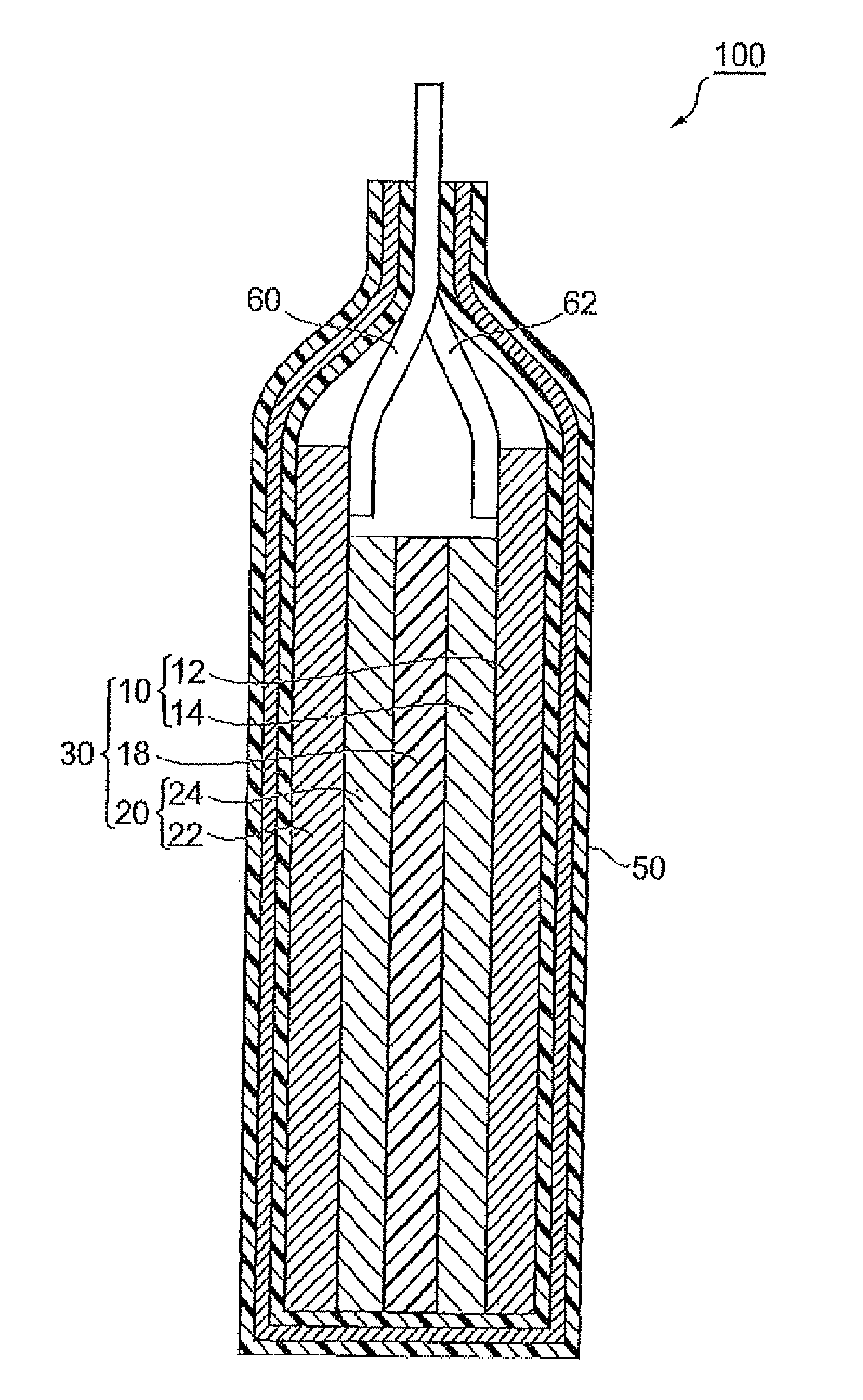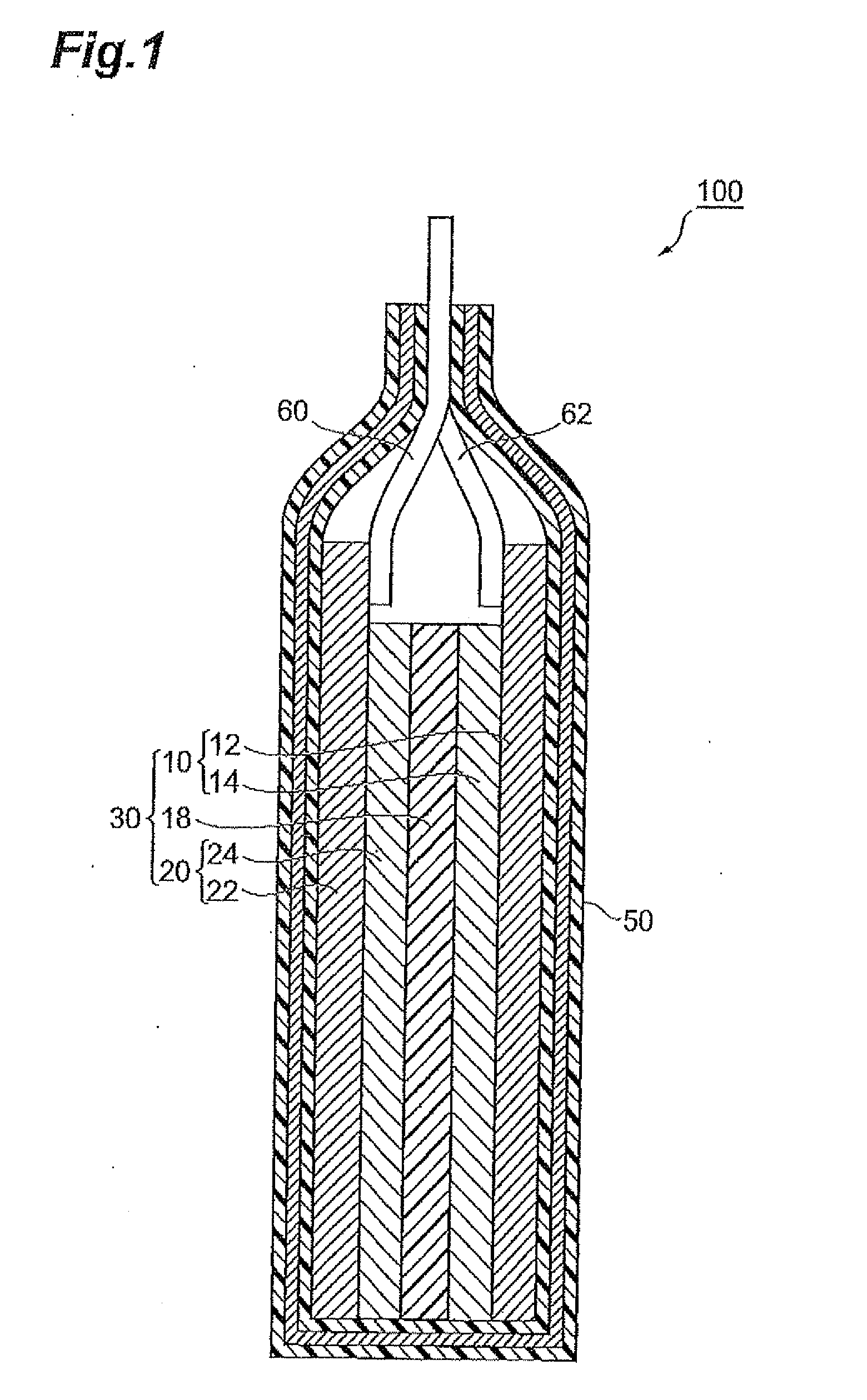Method of manufacturing active material and method of manufacturing lithium-ion secondary battery
- Summary
- Abstract
- Description
- Claims
- Application Information
AI Technical Summary
Benefits of technology
Problems solved by technology
Method used
Image
Examples
first embodiment
A preferred embodiment of the first aspect of the present invention will be referred to as “first embodiment” in this specification.
Method of Manufacturing Active Material
In the following, methods of manufacturing an active material and a lithium-ion secondary battery in accordance with the first embodiment will be explained in detail.
The method of manufacturing an active material in accordance with the first embodiment comprises the steps of heating a phosphate source, a vanadium source, and water so as to form an intermediate containing phosphorus and vanadium and having a specific surface area of at least 0.1 m2 / g but less than 25 m2 / g; and heating the intermediate, a water-soluble lithium salt, and water. Here, the intermediate is a precursor of LiVOPO4 while being a compound containing no Li. In the following, the step of forming the above-mentioned intermediate will be referred to as first heating step. The step of heating the intermediate, water-soluble lithium salt, and wate...
second embodiment
A preferred embodiment of the second aspect of the present invention will be referred to as “second embodiment” in this specification.
Method of Manufacturing Active Material
In the following, the method of manufacturing an active material in accordance with the second embodiment will be explained in detail.
The method of manufacturing an active material in accordance with the second embodiment comprises the steps of heating a phosphate source, a vanadium source, a water-soluble organic compound, and water for 1 to 12 hr so as to form, an intermediate; and heating the intermediate, a lithium salt, and water. Here, the intermediate is a precursor of LiVOPO4 while being a compound containing no Li. In the following, the step of forming the above-mentioned intermediate will be referred to as first heating step. The step of heating the intermediate, lithium source, and water will be referred to as second heating step.
First Heating Step
The first heating step may prepare a mixed liquid of a ...
examples of first aspect
of Invention
The first aspect of the present invention will now be explained more specifically with reference to examples 1 to 22 and comparative examples 1 to 9, but will not be limited to the following examples 1 to 22.
PUM
| Property | Measurement | Unit |
|---|---|---|
| Time | aaaaa | aaaaa |
| Specific surface area | aaaaa | aaaaa |
| Specific surface area | aaaaa | aaaaa |
Abstract
Description
Claims
Application Information
 Login to View More
Login to View More - R&D
- Intellectual Property
- Life Sciences
- Materials
- Tech Scout
- Unparalleled Data Quality
- Higher Quality Content
- 60% Fewer Hallucinations
Browse by: Latest US Patents, China's latest patents, Technical Efficacy Thesaurus, Application Domain, Technology Topic, Popular Technical Reports.
© 2025 PatSnap. All rights reserved.Legal|Privacy policy|Modern Slavery Act Transparency Statement|Sitemap|About US| Contact US: help@patsnap.com


